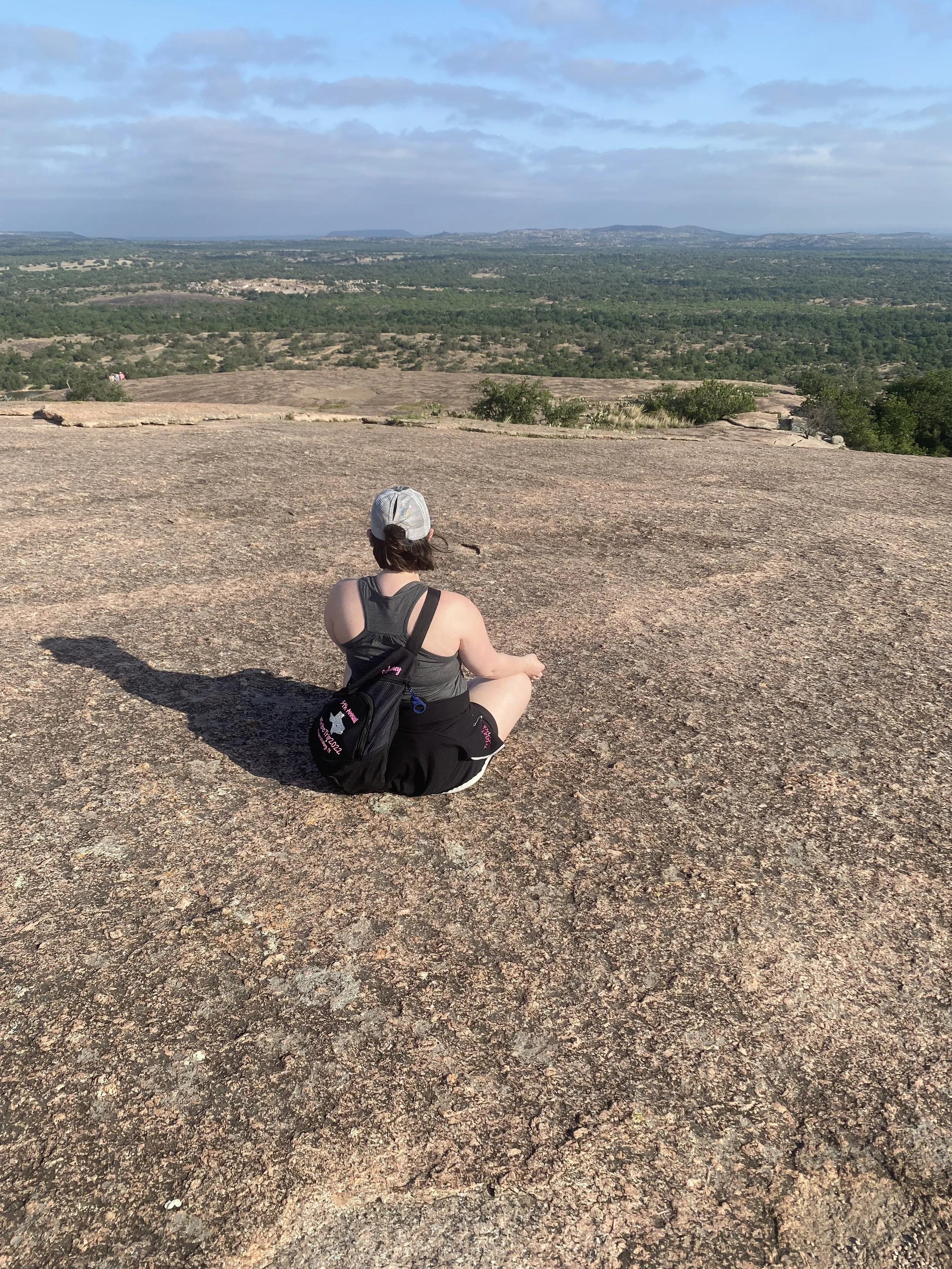defining common meditation terms
a beginner’s guide:
Meditation is a powerful practice that can bring profound peace, clarity, and well-being into our lives. However, for those new to meditation, the terminology can sometimes feel like a foreign language. Words like "mindfulness," "mantra," and "equinimity" are often used in meditation circles, but their meanings might not be immediately clear to everyone. This guide aims to demystify some of the most common meditation terms, providing you with a solid foundation as you embark on your meditation journey.
Aubrey Richardson LPC sitting and meditating over Enchanted Rock in Austin, Texas. This photo represents the articles intent of demystifying terminology in meditation.
Common Meditation Terms:
Mindfulness: Mindfulness, or being mindful, is the ability to recognize your experience as it is happening at the moment
Meditation: a formal practice of mindfulness
Sit: traditionally, meditation is completed in a seated position (typically with crossed legs) and refers to the process of starting a formal practice. I interpret this as whatever configuration honors your body as it is and without pain.
Equanimity: awareness to be present and unbiased by cultivating an attitude of non-attachment and non-resistance - I like to think of this as “all things are welcomed”
Chakras: originates from ancient Indian traditions and refers to the seven energy centers in the body, each corresponding to different physical, emotional, and spiritual aspects of our being. Understanding the chakras can enhance your meditation practice by helping you focus on specific areas of the body and their associated energies
Mantra: a word or phrase repeated during meditation to aid concentration and focus. Derived from Sanskrit, where "man" means mind and "tra" means tool or instrument, a mantra can be as simple as a single word like "peace" or a more complex phrase with deeper spiritual significance. The repetition of a mantra helps to anchor the mind, providing a focal point that can lead to a state of deep meditation.
Here and Now: staying in the present moment without allowing your mind to ruminate in the past or float to the future, noticing what is happening now Non-Doing: the practice of slowing the hell down and not focusing on your to-do list, productivity, or serving others. In non-doing, you have nothing else to be doing besides being in each moment. You sit without movement or multitasking.
Home base: a focal point of practice, typically the breath, that you concentrate on during the meditation. It can also be a sound or a bodily sensation that you return to when you notice that your mind starts to wander.
Holding Space: using meditation as a container for the thoughts and feelings you may not have had time to process, giving yourself to feel all of the feelings and observe any sensation with self-compassion
By familiarizing yourself with these common meditation terms, you can deepen your practice and unlock the full potential of meditation. Whether you're just starting out or looking to expand your knowledge, understanding these concepts is a crucial step toward achieving a more mindful and balanced life.
